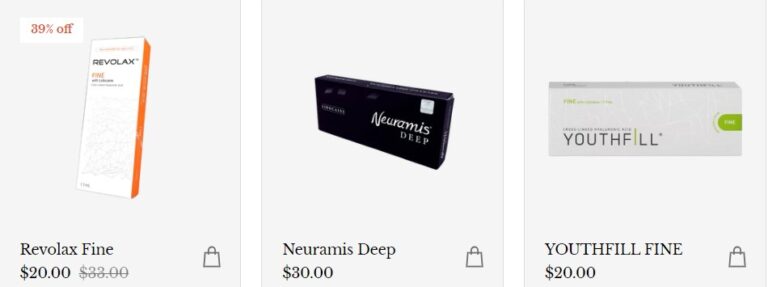
Common Issues with Mazda 3 Fuel Pump and How to Fix Them
The Mazda 3 is a popular and reliable car known for its smooth performance and sleek design. However, like any vehicle, it can experience issues with its Mazda 3 Fuel Pump and fuel sender. These components play a crucial role in delivering the necessary fuel to the engine, and when they malfunction, it can cause major problems. In this blog post, we will discuss the common issues that Mazda 3 owners may encounter with their fuel pump and fuel sender and provide tips on how to fix them to keep your car running smoothly.
Understanding the Role of Mazda’s 3 Fuel Pump and Fuel Sender
The fuel pump and fuel sender are two essential components in the Mazda 3 that work together to ensure the proper delivery of fuel to the engine. Understanding their roles can help you better diagnose and resolve any issues you may encounter.
The fuel pump is responsible for drawing fuel from the tank and delivering it to the engine. It uses a motor to create pressure and force the fuel through the fuel lines. The fuel sender, on the other hand, measures the amount of fuel in the tank and sends that information to the fuel gauge on your dashboard.
Both components are crucial for the smooth operation of your Mazda 3. If the fuel pump fails, your car may not start at all, or it may sputter and stall while driving. A faulty fuel sender, on the other hand, can lead to inaccurate fuel readings on your gauge, making it difficult to know how much fuel you have left.
By understanding the roles of the fuel pump and fuel sender, you can have a better idea of what might be causing any issues you’re experiencing. In the following sections, we’ll dive deeper into common problems with these components and provide tips on how to fix them.
Common Problems Encountered with Mazda’s 3 Fuel Pump
The Mazda’s 3 fuel pump is a critical component in delivering fuel to the engine, so it’s no surprise that issues can arise. One common problem Mazda 3 owners may encounter is fuel leaks. Over time, the fuel pump’s seals can wear out, causing fuel to leak. It can be a serious safety concern and should be addressed immediately.
Another problem that can occur with the fuel pump is low fuel pressure. If you notice your Mazda 3 struggling to start or experiencing a lack of power, it could be due to a weak fuel pump. Low fuel pressure can prevent the engine from receiving enough fuel for proper combustion, resulting in poor performance.
A third common problem is a failed fuel pump relay. The fuel pump relay controls the power supply to the fuel pump. If the relay fails, the fuel pump may not receive power, causing the engine to stall or not start at all.
Lastly, fuel pump noise can also be a sign of a problem. If you hear a loud whining or humming noise coming from the fuel tank area, it could indicate a faulty fuel pump. A failing motor within the fuel pump often causes this noise.
If you’re experiencing any of these problems with your Mazda 3’s fuel pump, it’s essential to address them promptly. Ignoring fuel pump issues can lead to more severe damage and potentially leave you stranded on the side of the road.
Identifying Symptoms of a Faulty Mazda’s 3 Fuel Sender
If you’re experiencing issues with your Mazda 3’s fuel sender, it’s essential to be able to identify the symptoms of a faulty component. The fuel sender is responsible for measuring the amount of fuel in your tank and transmitting that information to the fuel gauge on your dashboard. When the fuel sender is not functioning properly, it can lead to inaccurate fuel readings and fuel gauge malfunctions.
One common symptom of a faulty fuel sender is an inaccurate fuel gauge reading. You may notice that your fuel gauge shows a full tank when it’s actually empty, or it may fluctuate unpredictably while driving. It can be frustrating and make it difficult to determine how much fuel you actually have left.
Another symptom to watch out for is a fuel gauge that is stuck on empty or reads as constantly low, even when you have recently refuelled. It can lead to unnecessary anxiety and make it challenging to plan your journeys effectively.
In some cases, a faulty fuel sender can also cause the fuel gauge to show erratic readings or jump around unexpectedly. It can be confusing and make it difficult to assess your fuel level accurately.
If you notice any of these symptoms with your Mazda 3’s fuel sender, it’s essential to address the issue promptly. Ignoring a faulty fuel sender can lead to further complications and potentially leave you stranded on the road without any fuel.
Troubleshooting Mazda’s 3 Fuel Pump Issues
If you’re experiencing issues with your Mazda 3’s fuel pump, troubleshooting the problem is crucial to ensure your car runs smoothly. Here are some tips to help you identify and address fuel pump issues.
First, check for any fuel leaks around the fuel pump area. Look for puddles or the smell of gasoline, as these indicate a possible leak. If you notice a leak, it’s essential to address it immediately for safety reasons.
Next, test the fuel pressure using a fuel pressure gauge. It will help determine if the fuel pump is providing the necessary pressure to deliver fuel to the engine. Low fuel pressure can cause poor engine performance, difficulty starting, or stalling while driving.
You should also check the electrical connections to the fuel pump. Loose or corroded connections can affect the pump’s functionality. Ensure all connections are secure and clean.
If you hear unusual noises coming from the fuel pump, such as a loud whining or humming sound, it could indicate a failing motor. In this case, replacing the fuel pump may be necessary.
Lastly, if you’ve ruled out other potential issues and are still experiencing fuel pump problems, it may be helpful to consult a professional mechanic. They have the expertise and specialized tools to diagnose and fix fuel pump issues accurately.
Preventative Maintenance for Your Mazda 3 Fuel System
To ensure the longevity and optimal performance of your Mazda 3’s fuel system, regular preventative maintenance is key. By following these simple steps, you can keep your fuel pump and fuel sender in good condition and avoid potential issues in the future.
First and foremost, it is crucial to keep your fuel tank clean and free from debris. Over time, dirt and particles can accumulate in the tank, clogging the fuel pump and potentially causing damage. Regularly inspect and clean the tank to prevent any blockages.
Additionally, it is recommended that the fuel filter be replaced at regular intervals. The fuel filter helps to remove impurities and contaminants from the fuel, preventing them from reaching the fuel pump and engine. By replacing the fuel filter according to your manufacturer’s guidelines, you can ensure that your fuel system remains clean and efficient.
Another important aspect of preventative maintenance is using high-quality fuel. Low-quality or contaminated fuel can have a negative impact on the fuel pump’s performance and cause premature wear. It is always advisable to fill up at reputable gas stations and avoid using old or expired fuel.
Lastly, keeping an eye on your fuel levels and avoiding running on empty is crucial. When the fuel tank is empty, the fuel pump is forced to work harder, potentially causing strain and premature wear. It is best to refill your tank before it reaches a critically low level to ensure the fuel pump remains well-lubricated and protected.
By implementing these preventative maintenance practices, you can keep your Mazda 3’s fuel system in optimal condition and avoid any potential fuel pump or fuel sender issues in the future. Remember, a little care and attention can go a long way in keeping your car running smoothly for years to come.
Fixing Your Mazda Fuel Pump on a Budget
If you’re facing issues with your Mazda 3’s fuel pump but are on a budget, don’t worry! There are cost-effective ways to fix the problem without sacrificing performance.
One option is to consider a used or refurbished fuel pump. While it may not be brand new, a quality used pump can still provide reliable performance at a fraction of the cost. Just be sure to source it from a reputable seller to ensure its functionality and compatibility with your Mazda 3.
Another budget-friendly option is to replace only the faulty components of the fuel pump instead of the entire unit. For example, if the fuel pump motor is the issue, you can purchase a replacement motor and install it yourself or have a mechanic do it for you. It can be a more affordable solution compared to replacing the entire pump.
Additionally, you can save money by doing the repairs yourself if you have the knowledge and tools. Many online resources and tutorials are available that can guide you through the process step by step.
Remember, it’s essential to address fuel pump issues promptly to avoid more severe damage and potential breakdowns. With these cost-effective options, you can fix your Mazda 3’s fuel pump without breaking the bank.
Replacing Your Mazda 3 Fuel Sender Filter for Better Performance
When it comes to optimizing the performance of your Mazda 3, replacing the fuel sender filter can make a significant difference. The fuel sender filter is responsible for preventing any contaminants or impurities from reaching the fuel sender, ensuring accurate fuel readings and smooth operation of the fuel gauge.
Over time, the Mazda 3 Fuel Sender filter can become clogged with dirt and debris, causing it to malfunction. It can lead to inaccurate fuel readings and a faulty fuel gauge, making it difficult to gauge your fuel levels accurately.
To replace the fuel sender filter, start by locating the fuel sender, which is usually located in or near the fuel tank. Consult your Mazda 3’s owner’s manual or a reputable online resource for specific instructions on accessing the fuel sender.
Once you have accessed the fuel sender, remove the old filter by disconnecting any necessary hoses or connectors. Replace it with a new fuel sender filter, ensuring it is compatible with your Mazda 3 model.
Finally, reattach any hoses or connectors and ensure they are securely fastened. Start your Mazda 3 and check that the fuel gauge is functioning correctly and providing accurate fuel readings.
FAQs
Q: How often should I replace the fuel filter in my Mazda 3?
A: It is recommended to replace the fuel filter in your Mazda 3 every 30,000 to 40,000 miles. However, it is always best to consult your owner’s manual or a trusted mechanic for specific recommendations based on your vehicle’s make and model.
Q: Can I replace the fuel pump in my Mazda 3 myself?
A: While it is possible to replace the fuel pump in your Mazda 3 yourself, it is a complex task that requires knowledge of the vehicle’s fuel system and specialized tools. If you have experience with automotive repairs and feel confident in your abilities, you may attempt the replacement yourself. However, if you need more clarification or need to familiarize yourself with the process, it is recommended that you consult a professional mechanic for assistance.
Q: What should I do if I suspect a Mazda 3 Fuel Sender or fuel pump fuel?
A: If you suspect a fuel pump or fuel sender issue in your Mazda 3, it is best to address it promptly. First, check for any signs of fuel leaks or unusual noises coming from the fuel tank area. Then, consult your owner’s manual or seek professional assistance to diagnose and fix the issue.
Conclusion
In conclusion, understanding the common issues that Mazda 3 owners may encounter with their fuel pump and fuel sender is essential for maintaining a smooth-running vehicle. From fuel leaks to low fuel pressure and failed relays, these problems can have a significant impact on your car’s performance. By addressing these issues promptly and implementing regular preventative maintenance, you can ensure that your Mazda 3 remains reliable and efficient on the road. Don’t let Mazda 3 Fuel Pump and fuel sender problems derail your driving experience – stay proactive and keep your Mazda 3 running smoothly for years to come.



